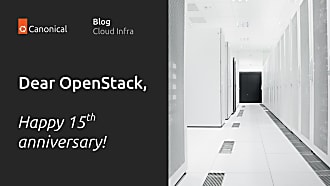Canonical
on 11 March 2015
Make IT rain: public cloud on Ubuntu OpenStack

Ubuntu OpenStack is the most trusted platform on which to build a public cloud. One of the best things about it is the ease of moving from a proof of concept or small lab-based deployment to a large, scalable, production one. In this brochure, we discuss some basics about running Ubuntu OpenStack for public clouds, and give you some tips and tricks to make the most of your deployment.



